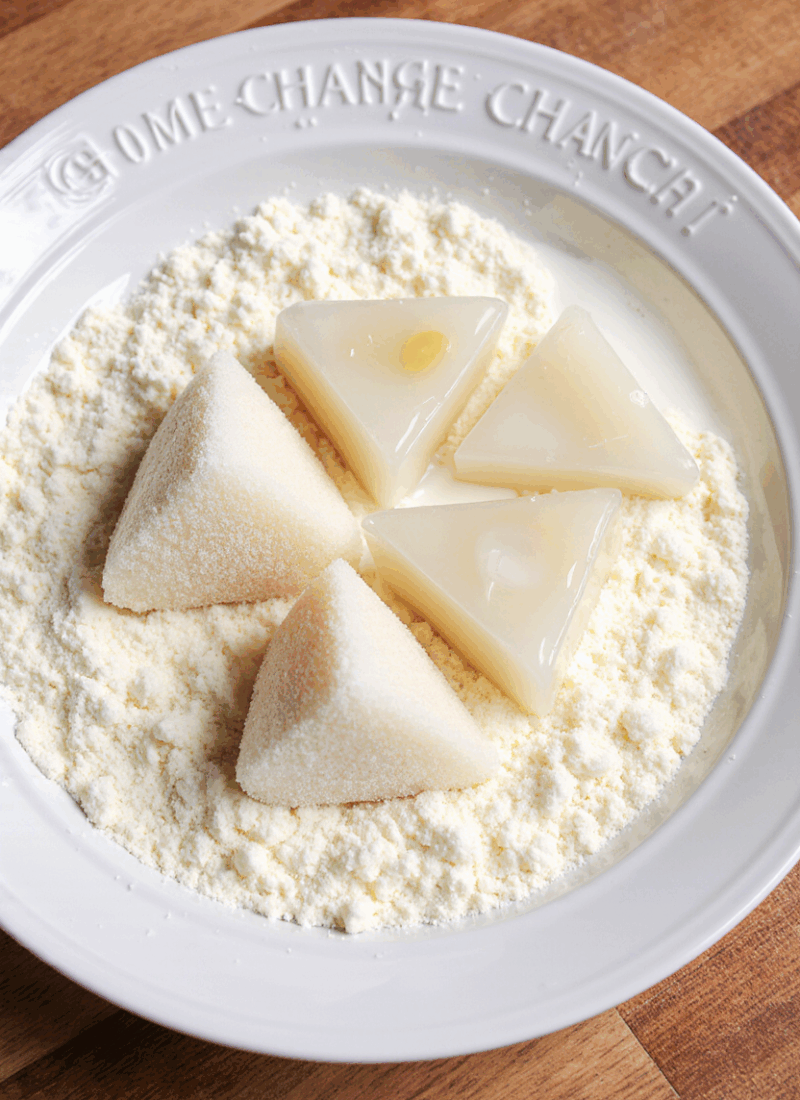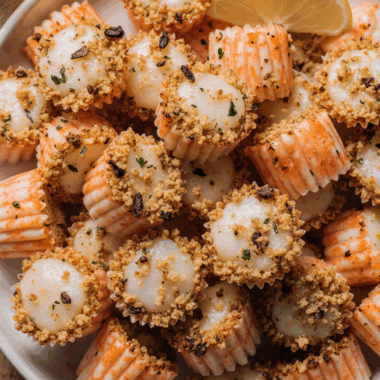Milk mochi is a soft and chewy Japanese rice cake that incorporates the creamy richness of milk into the dough. The result is a sweet, milky flavor and a smooth texture that sets it apart from traditional mochi. This easy recipe involves pan-frying the mochi, offering a quick and delicious treat without complex techniques. Perfect for those new to making mochi or anyone craving a simple yet indulgent dessert.
Full Recipe:
Ingredients
-
150g glutinous rice flour
-
30g cornstarch
-
25g sugar
-
20g corn oil
-
290g whole milk
-
Roasted soybean flour for coating (optional)
Directions
-
Mix the ingredients: In a large bowl, combine the glutinous rice flour, cornstarch, sugar, corn oil, and whole milk. Stir until well mixed.
-
Strain (optional): Strain the mixture if you prefer a smoother texture.
-
Cook the mixture: Pour the mixture into a non-stick pan. Cook over low heat, stirring slowly until it forms a cohesive mass and becomes fully cooked.
-
Knead the dough: Remove from heat and let the mixture cool. Once cooled, put on gloves and knead the dough for about 5 minutes until it becomes elastic.
-
Shape the mochi: Roll the dough into a long strip. Sprinkle cooked glutinous rice flour to prevent sticking and cut it into triangular shapes or your preferred shape.
-
Coat with soybean flour: Roll the pieces in roasted soybean flour, if desired, and serve.
Nutrients
-
Calories: 278 kcal
-
Carbohydrates: 47g
-
Protein: 5g
-
Fat: 8g
-
Saturated Fat: 2g
-
Polyunsaturated Fat: 2g
-
Monounsaturated Fat: 4g
-
Cholesterol: 9mg
-
Sodium: 28mg
-
Potassium: 138mg
-
Fiber: 1g
-
Sugar: 10g
-
Vitamin A: 117 IU
-
Calcium: 93mg
-
Iron: 0.2mg








